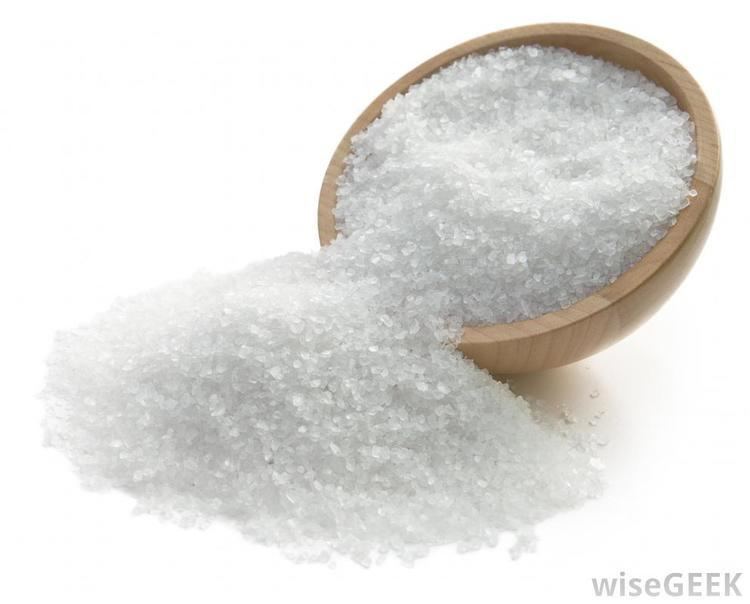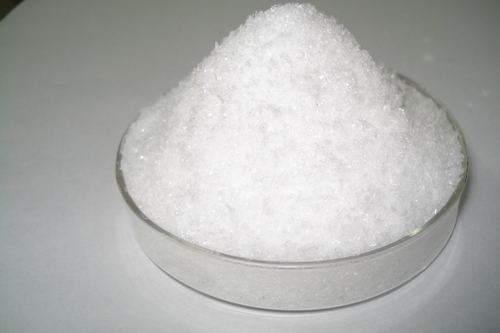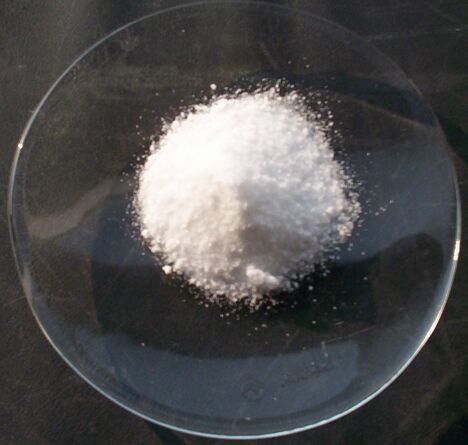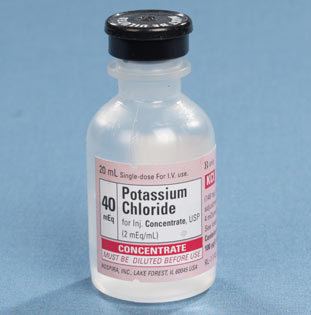Molar mass 74.5513 g/mol Melting point 770 °C Density 1.98 g/cm³ | Formula KCl Boiling point 1,420 °C Soluble in Water | |
 | ||
Appearance white crystalline solid Related compounds | ||
Potassium chloride uses benefits and dangers
Potassium chloride (KCl) is a metal halide salt composed of potassium and chloride. It is odorless and has a white or colorless vitreous crystal appearance. The solid dissolves readily in water and its solutions have a salt-like taste. KCl is used as a fertilizer, in medicine, scientific applications, food processing, and used to cause cardiac arrest as the third drug in the "three drug cocktail" for executions by lethal injection. It occurs naturally as the mineral sylvite and in combination with sodium chloride as sylvinite.
Contents
- Potassium chloride uses benefits and dangers
- Trick question potassium chloride kcl find meq hr do meq ml ml hr sr meq kg hr
- Fertilizer
- Medical use
- Other
- Side effects
- Solubility
- Redox and the conversion to potassium metal
- Physical properties
- Production
- Laboratory methods
- References

The version for injection is on the World Health Organization's List of Essential Medicines, the most important medications needed in a basic health system.

Trick question potassium chloride kcl find meq hr do meq ml ml hr sr meq kg hr
Fertilizer

The majority of the potassium chloride produced is used for making fertilizer, since the growth of many plants is limited by their potassium intake. As a chemical feedstock, it is used for the manufacture of potassium hydroxide and potassium metal. It is also used in medicine, lethal injections, scientific applications, food processing, and as a sodium-free substitute for table salt for persons concerned about the health effects of sodium.
Medical use

Potassium is vital in the human body, and potassium chloride by mouth is the common means to treat low blood potassium, although it can also be given intravenously. It can be used as a salt substitute for food, but due to its weak, bitter, unsalty flavor, it is usually mixed with ordinary table salt (sodium chloride) to improve the taste. The addition of 1 ppm of thaumatin considerably reduces this bitterness. Complaints of bitterness or a chemical or metallic taste are also reported with potassium chloride used in food.
Other

It is sometimes used in water as a completion fluid in petroleum and natural gas operations, as well as being an alternative to sodium chloride in household water softener units.
KCl is useful as a beta radiation source for calibration of radiation monitoring equipment, because natural potassium contains 0.0118% of the isotope 40K. One kilogram of KCl yields 16350 becquerels of radiation consisting of 89.28% beta and 10.72% gamma with 1.46083 MeV.
Potassium chloride is used in some de-icing products that are designed to be safer for pets and plants, though these are inferior in melting quality to calcium chloride [lowest usable temperature 12 °F (−11 °C) v. −25 °F (−32 °C)]. It is also used in various brands of bottled water, as well as in bulk quantities for fossil fuel drilling purposes.
Potassium chloride was once used as a fire extinguishing agent, used in portable and wheeled fire extinguishers. Known as Super-K dry chemical, it was more effective than sodium bicarbonate-based dry chemicals and was compatible with protein foam. This agent fell out of favor with the introduction of potassium bicarbonate (Purple-K) dry chemical in the late 1960s, which was much less corrosive and more effective. It is rated for B and C fires.
Along with sodium chloride and lithium chloride, potassium chloride is used as a flux for the gas welding of aluminium.
Potassium chloride is also an optical crystal with a wide transmission range from 210 nm to 20 µm. While cheap, KCl crystal is hygroscopic. This limits its application to protected environments or short-term uses such as prototyping. Exposed to free air, KCl optics will "rot". Whereas KCl components were formerly used for infrared optics, it has been entirely replaced by much tougher crystals such as zinc selenide.
Potassium chloride has also been used to produce heat packs which employ exothermic chemical reactions, but these have mostly been discontinued with the advent of cheaper and more efficient methods, such as the oxidation of metals ('Hot Hands' one-time-use products) or the crystallization of sodium acetate (multiple-use products).
Potassium chloride is used as a scotophor with designation P10 in dark-trace CRTs, e.g. in the Skiatron.
Side effects
By mouth, potassium chloride is toxic in excess; the LD50 is around 2.5 g/kg (meaning that a lethal dose for 50% of people weighing 75 kg (165 lb) is about 190 g (6.7 ounces)). The oral toxicity of sodium chloride (table salt) is 3.75 g/kg. Thus potassium chloride is harmless for alimentation (and even good for health, see previous paragraph). But intravenously, without the step of digestive absorption, this is reduced to just over 30 mg/kg. Most concerns are its severe effects on the cardiac muscles: high doses can cause cardiac arrest and rapid death; thus the aforementioned is used as the third and final drug delivered in the lethal injection process.
Solubility
KCl is soluble in a variety of polar solvents.
Solutions of KCl are common standards, for example for calibration of the electrical conductivity of (ionic) solutions, since KCl solutions are stable, allowing for reproducible measurements. In aqueous solution, it is essentially fully ionized into solvated K+ and Cl– ions.
Redox and the conversion to potassium metal
Although potassium is more electropositive than sodium, KCl can be reduced to the metal by reaction with metallic sodium at 850 °C because the more volatile potassium can be removed by distillation (see Le Chatelier's principle):
KCl(l) + Na(l) ⇌ NaCl(l) + K(g)This method is the main method for producing metallic potassium. Electrolysis (used for sodium) fails because of the high solubility of potassium in molten KCl.
Physical properties
The crystal structure of potassium chloride is like that of NaCl. It adopts a face-centered cubic structure. Its lattice constant is roughly 6.3 Å. Crystals cleave easily in three directions.
Some other properties are
As with other compounds containing potassium, KCl in powdered form gives a lilac flame test result.
Production
Potassium chloride is extracted from minerals sylvite, carnallite, and potash. It is also extracted from salt water and can be manufactured by crystallization from solution, flotation or electrostatic separation from suitable minerals. It is a by-product of the production of nitric acid from potassium nitrate and hydrochloric acid.
Laboratory methods
Potassium chloride is inexpensively available and is rarely prepared intentionally in the laboratory. It can be generated by treating potassium hydroxide (or other potassium bases) with hydrochloric acid:
KOH + HCl → KCl + H2OThis conversion is an acid-base neutralization reaction. The resulting salt can then be purified by recrystallization. Another method would be to allow potassium to burn in the presence of chlorine gas, also a very exothermic reaction:
2 K + Cl2 → 2 KCl